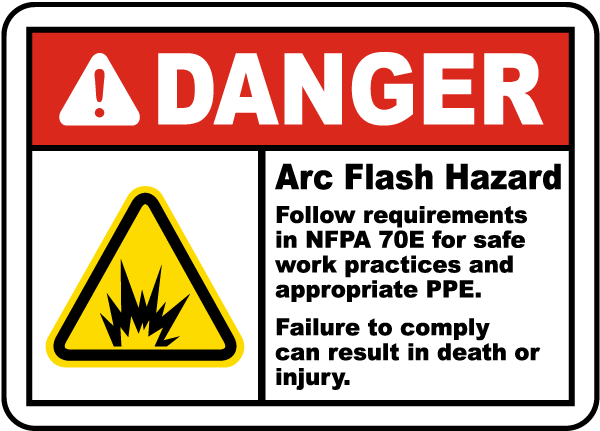Definition of Terms
It is a sad reality that even Electrical Engineers are not aware of the diffrences of arc faults and arc flashes.
Arc faults and arc flashes are two distinct electrical phenomena that occur in electrical systems.
An arc fault is an unintentional electrical discharge that occurs when current flows through an unintended path, often due to damaged insulation, poor connections, or other faults in the electrical system. Arc faults can lead to sparks or discharges of electricity which can cause localized heating, damage to equipment, and potentially start fires. Arc faults are a safety concern as they can lead to hazardous conditions, but they are usually on a smaller scale compared to arc flashes.
An arc flash is the sudden release of electrical energy through the air when a high-voltage gap exists and there is a breakdown of insulation between conductors. This phenomenon results in a rapid release of energy in the form of light, sound, heat, and a pressure wave.
Effects and Consequences
An arc fault can generate significant heat, leading to the ignition of nearby flammable materials and potentially starting a fire. Due to this, arc-fault circuit interrupters (AFCIs) have been developed to detect and stop arc faults, thus preventing potential fires.
An arc flash is a much more severe event than arc fault. Arc flashes can produce temperatures exceeding 35,000 degrees Fahrenheit (19,400 degrees Celsius). The extreme heat generated by an arc flash can cause serious injuries, burns, and even fatalities to personnel in the vicinity.
Due to these hazards associated with arc flash, the National Fire Protection Association (NFPA) has guidelines (NFPA 70E) on safety standards for employees working around live electrical components. These guidelines include the use of personal protective equipment (PPE) and procedures to minimize the risk of an arc flash incident.
Safety Measures
Both arc faults and arc flashes are safety concerns. Electrical systems are required to be designed with safety measures to detect and mitigate arc faults. However, preventing arc flashes requires additional protective measures, such as proper electrical system design, personal protective equipment (PPE) for workers, and arc flash hazard analysis.
In industrial and commercial settings, it's crucial to assess and manage the risks associated with both arc faults and arc flashes to ensure the safety of personnel and the integrity of electrical systems. This involves implementing appropriate preventive measures, training, and using appropriate protective equipment.
In summary, while both arc fault and arc flash are related to unintended electrical arcing, an arc fault refers primarily to the unwanted electrical path and its potential for causing fires, whereas an arc flash emphasizes the explosive energy release and its immediate threat to human safety.
